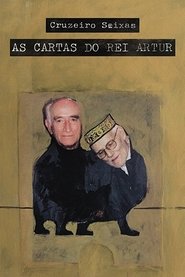detail profile miguel gon c3 a7alves mendes
Peran Yang Di Mainkan Miguel Gonçalves Mendes
 In The Meaning of Life we...
In The Meaning of Life we...The Meaning of Life 2021
In The Meaning of Life we will take part on a journey throughout the world to question our existence through the inquiries of a young Brazilian, with a rare hereditary disease with no cure.
 Fernando Lemos a Portuguese surrealist artist...
Fernando Lemos a Portuguese surrealist artist...Retratação 2019
Fernando Lemos, a Portuguese surrealist artist, fled from dictatorship to Brazil in 1952 searching for something better. The movie follows the last moments of his journey and the struggle for the preservation of his legacy, trying to fulfill his last great desire: to be a good dead man.
 Cruzeiro Seixas lives in a maze...
Cruzeiro Seixas lives in a maze...Cruzeiro Seixas - The Letters of King Artur 2017
Cruzeiro Seixas lives in a maze where every path leads to Mário Cesariny. Subdued by that obsessive love and hate relationship, Cruzeiro Seixos did not fully live, but left proofs of that non-existence: 95 years of paintings and poetry that await full recognition alongside other surrealist masters.
 A deeply moving story about love...
A deeply moving story about love...José & Pilar 2010
A deeply moving story about love, loss and literature, this documentary follows the days of José Saramago, the Nobel-laureate Portuguese novelist, and his wife, Pilar del Río. The film shows their whirlwind life of international travel, his passion for completing his masterpiece "The Elephant's Journey", and how their love quietly sustains them throughout.
 The legend of Floripes is about...
The legend of Floripes is about...Floripes 2005
The legend of Floripes, is about an enchanted moor of Olhão, in the Algarve. Enchanted moors are one of the cornerstones of Portuguese mythology. They are often seductive and being temptresses, they can offer a powerful reward, but also a terrible curse. Left in Portugal during the Reconquista while her family went back to North Africa, beautiful Floripes was condemned to roam her ancient kingdom in the Algarve until a man could undo her curse. Then she would marry him and give him her fabulous treasure. But if the man fails, she must eat his heart.
 A documentary that portrays not only...
A documentary that portrays not only...Autography 2004
A documentary that portrays not only the poet and painter Mario Cesariny but as well his life, his journey and his individuality.
 Freely based on Gide Paludes and...
Freely based on Gide Paludes and...The Sound of the Shaking Earth 1990
Freely based on Gide ('Paludes') and Hawthorne ('Wakefield'), this is a film about a writer who never wrote anything and who blows at nightfall the breath of frost. The poem by Carlos Queiroz to which the above sentences belong is not cited in 'O som da Terra a Tremer', but the atmosphere is that, between written letters never received. Fiction within fiction, stories within stories, like those Chinese boxes in which there is always one inside another. Or the two margins of the same river, always being lateral.


